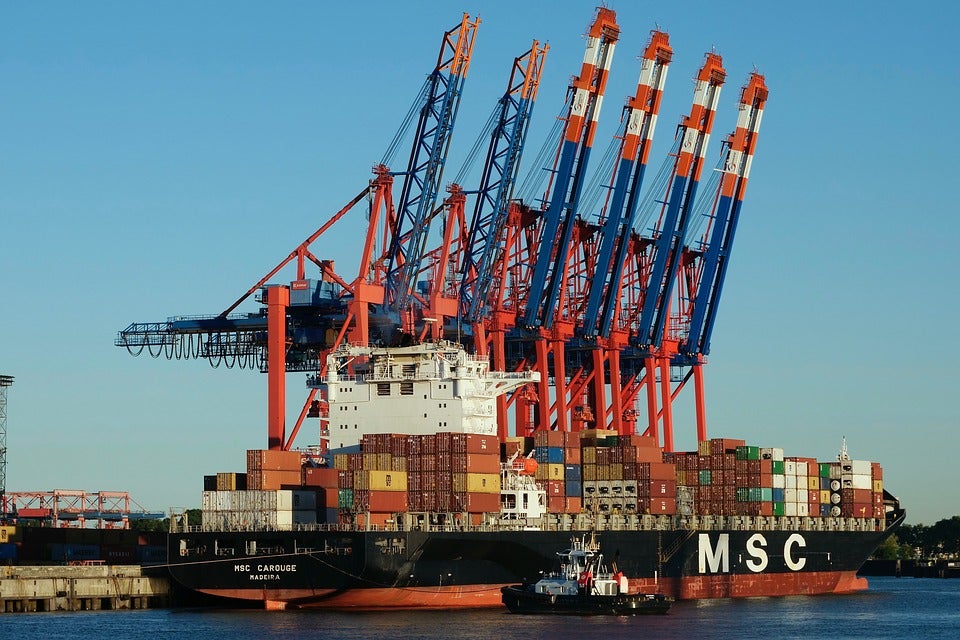27% profit every 20 days?
This is what Nic Chahine averages with his option buys. Not selling covered calls or spreads… BUYING options. Most traders don’t even have a winning percentage of 27% buying options. He has an 83% win rate. Here’s how he does it.
Port authorities in Los Angeles and Long Beach plan to start assessing and collecting late fees on loaded import containers that remain on the docks for extended periods as soon as Nov. 15. The information was disclosed in agendas for emergency meetings of the respective harbor commissions on Friday.
The boards will vote on plans submitted by port staff to charge ocean carriers $100 per day, increasing in $100 increments per container per day, for containers scheduled to move locally by truck that are left for nine days or more, and for containers scheduled to move by intermodal rail that dwell for six days or more.
ENTER TO WIN $500 IN STOCK OR CRYPTO
Enter your email and you'll also get Benzinga's ultimate morning update AND a free $30 gift card and more!
The "Container Excess Dwell Fee," which was designed in close coordination with the Biden administration and unidentified industry stakeholders as a way to incentivize faster pickup of containers, is scheduled to last for 90 days, according to the agendas. The goal is to free up space for several crowded terminals that are preventing ships from efficiently discharging cargo, resulting in a queue of 74 container vessels waiting outside the port for a parking spot.
The surcharge will be billed to ocean carriers and collected (directly or through an appointed agent) on a monthly basis, according to the Port of Long Beach's proposed tariff. Monies collected will be deposited in a fund to cover the cost of special projects for expediting cargo.
The ports announced the late storage fees on Monday and said they would kick in Nov. 1. They did not indicate then that they were subject to commission approval.
Freight transportation companies have widely criticized the measure, saying it was developed with good intentions but could make matters worse by using up remaining chassis for off-port storage and that they are misguided because there is nowhere for full warehouses to put incoming cargo. And, while vessel operators handle the inland transportation on their customers' behalf, they have no control over haulage directly managed by importers.
The biggest concern is that ocean carriers will pass the cost onto shippers that paid for the transport.
According to the temporary order described in the agenda, the demurrage fees on carriers would start no earlier than Nov. 15 after the executive gives final notice at a public board meeting. The Los Angeles Harbor Commission is scheduled to meet in regular session on Nov. 18.
FREE REPORT: How To Learn Options Trading Fast
In this special report, you will learn the four best strategies for trading options, how to stay safe as a complete beginner, a 411% trade case study, PLUS how to access two new potential winning options trades starting today.Claim Your Free Report Here.
In related news, the Los Angeles Harbor Commission is being asked to approve a $2.5 million work order for improving a 10-acre parcel for the temporary storage of chassis and containers to help relieve congestion at the terminals.
Click here for more American Shipper/FreightWaves stories by Eric Kulisch.
RELATED NEWS:
Port commissions to vote Friday on carrier fees for lingering containers
Ocean carriers will pass on fines for lingering containers to importers
Shippers fear ‘catastrophic' fallout from ‘crazy' California port fees
Port of Long Beach sets up rail relief valve in Utah
California, US DOT to coordinate on major freight infrastructure projects
Image Sourced from Pixabay
27% profit every 20 days?
This is what Nic Chahine averages with his option buys. Not selling covered calls or spreads… BUYING options. Most traders don’t even have a winning percentage of 27% buying options. He has an 83% win rate. Here’s how he does it.
